How to Load a Trailer
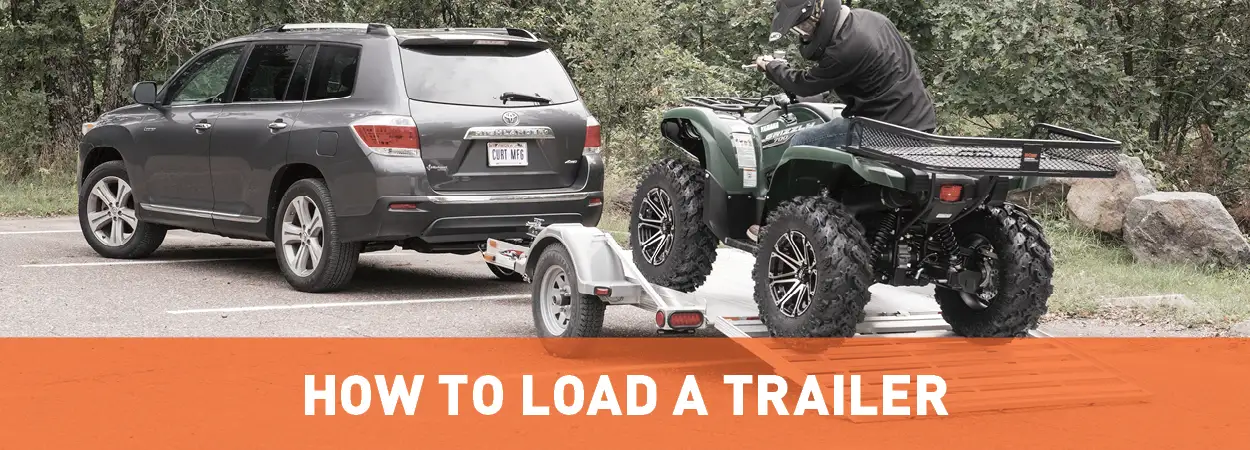

Proper Trailer Loading How-To
Follow These 7 Simple Steps!
There are seven basic steps you should follow when loading a trailer, including parking on a level surface, loading heavy items first, following the 60/40 rule and tying down cargo.
In this guide, we will walking through step by step how to load a trailer. These steps are meant to be a general guide for loading a trailer correctly. Proper loading may vary based on trailer type.
- Park on a level surface
- Chock the wheels
- Distributed the weight 60/40
- Load heaviest items first
- Tie down large items
- Place lightweight cargo on top
- Hitch up and test trailer lights
How to properly load a trailer video
Use your smartphone to weigh your trailer! Check out BetterWeigh™
7 Steps for Loading Trailers Safely
Step 1: Park your trailer on a level surface
Begin by making sure your trailer is parked on a level surface. If it is not level, it may shift or even tip once the loading begins.
It is best to make sure your trailer is on level ground before you start and that there’s plenty of room for your vehicle to be hitched up.
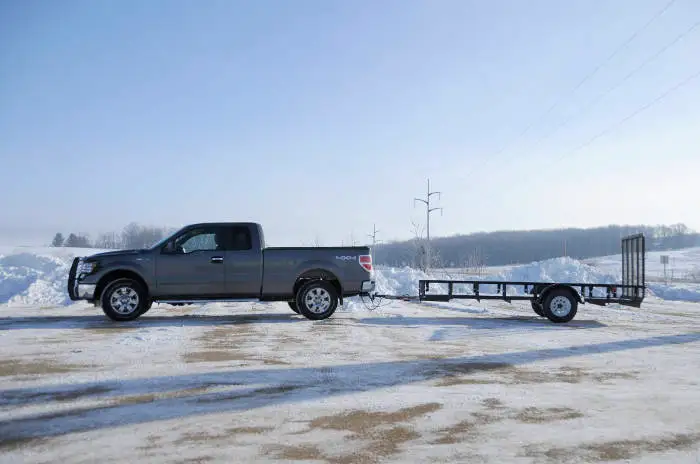

Step 2: Chock the wheels
To further stabilize your trailer while loading it, wheel chocks are recommended.
Simply chocking the wheels will help ensure your trailer won’t move or roll while loading cargo. It will also help prevent shifting once weight is added to the trailer.
You can also hitch your trailer up to your vehicle before loading, and place the vehicle in park with emergency brake engaged to help keep the trailer stabilized.
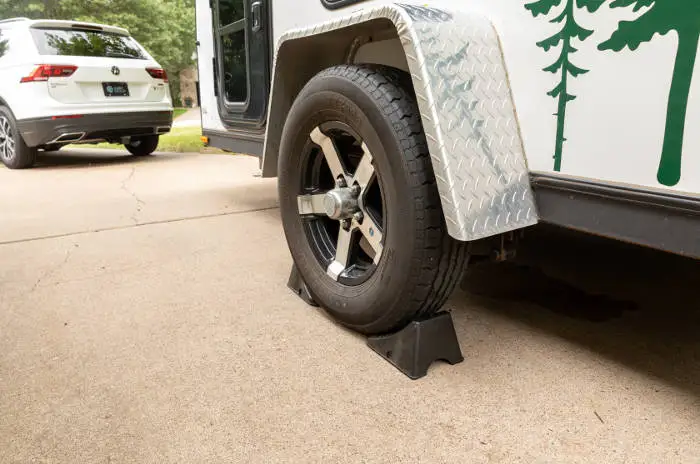

Step 3: Make sure the weight is distributed 60/40
Before loading anything into the trailer, take a quick inventory of your cargo and roughly plan out where you’ll be placing it in the trailer.
The rule to follow is 60/40.
60% of the trailer load should be in front of the axle, and 40% should be behind. This will help ensure proper tongue weight to deter trailer sway.
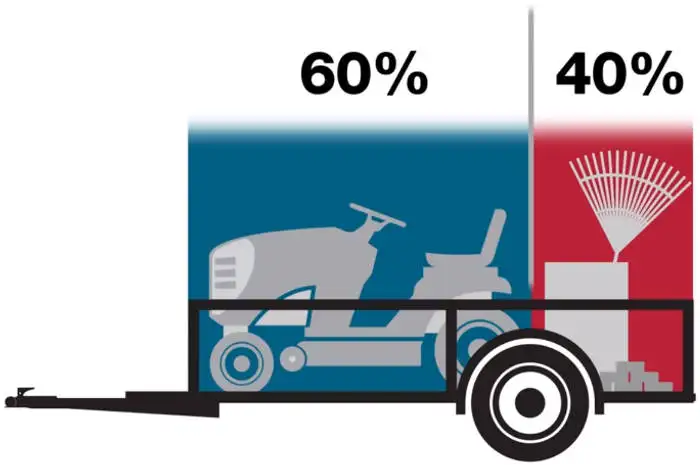

Step 4: Load heaviest items first
Following the 60/40 rule when loading a trailer is vitally important for safe towing. The best way to load for proper weight distribution is to start with the largest and heaviest items.
Place heavy cargo in the center of the trailer, just forward of the axle. Then, lighter weight items can be placed around it, being distributed evenly.
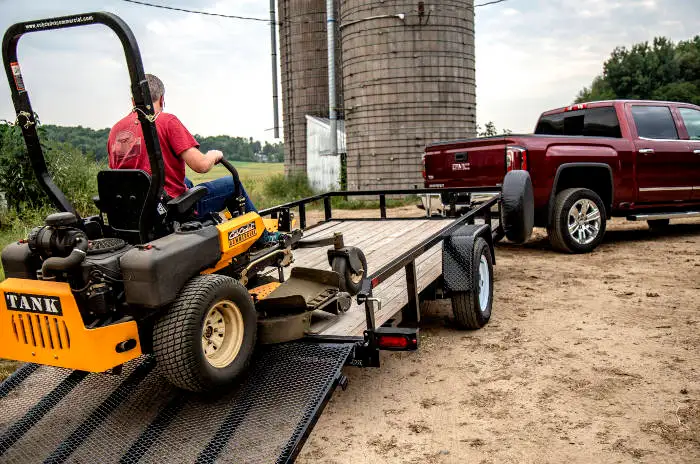

Step 5: Tie down large items with straps
After loading your trailer with bulky and heavy items, secure the items to the trailer’s tie-down anchors, using rope, chain or ratchet straps.
Don’t breeze over this step!
Make sure each item is thoroughly tied down and won’t come loose while towing.
After the ratchet straps or other tie downs are properly tightened, be sure to tie off the excess, so it will not drag or get caught in the wheels.


Step 6: Place lightweight cargo on top
With heavy items loaded, you can then load the lighter cargo in open nooks or on top of the heavy cargo, if it is safe to do so.
Lightweight cargo may include small tools or supplies, or it could be leaves or yard waste. When packing small items, it is helpful to put them together in a larger container and then load them on the trailer.
You may also wish to cover the trailer load with a tarp to help protect the cargo against wind damage and rain.
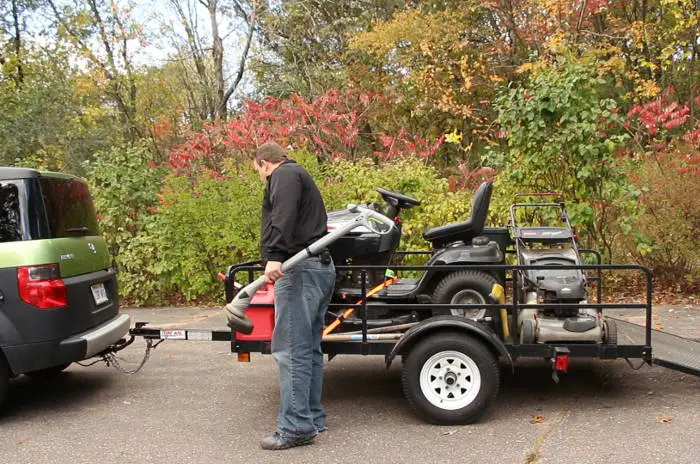

Step 7: Hitch up and test your trailer lights
If your trailer is not yet hooked up to your vehicle, follow the proper steps for coupling the hitch. Make sure your towing vehicle and equipment are properly rated to tow the weight of your loaded trailer.
Also, check the tongue weight to minimize the possibility of trailer sway.


How to Load a Double Axle Trailer
Loading a double axle trailer requires the same steps as loading a single axle trailer. It is important to follow the 60/40 rule. 60% of the weight should be in front of the tandem axle and 40% behind.
Double axle trailers can typically tow larger loads, compared to single axle trailers. If the trailer load is small enough, you may prefer to center the load between the two axles. However, always verify your tongue weight is 10 to 15% of the gross trailer weight.


FAQs
When loading a trailer, where should you put the weight?
The simple rule to follow is to place 60% of the weight in front of the axle and 40% behind. It doesn’t matter if you’re loading a single-axle, double-axle or triple-axle trailer, the 60/40 rule still applies. An unbalanced trailer can lead to trailer sway and other dangers while driving.
What is the proper way to load a trailer?
The proper way to load a trailer is to load heavy items first. Heavy cargo should be placed securely in the trailer bed, and distributed so that about 60% of the total weight is in front of the axle. Lightweight items can carefully be placed around the heavy items and secured with straps.
Where should the weight be on a trailer?
More weight should be placed in front of the trailer axle and less weight behind. The ideal distribution of weight is 60% in front of the axle and 40% behind the axle.
Where do you put the most weight on a trailer?
The most weight should be placed in front of the trailer axle. The ideal amount is 60 percent. This leaves 40 percent of the weight that should be placed to the rear of the axle. This will help avoid trailer sway and promote optimal driver control.
 ARIES
ARIES  CURT
CURT  LUVERNE
LUVERNE  UWS
UWS 



